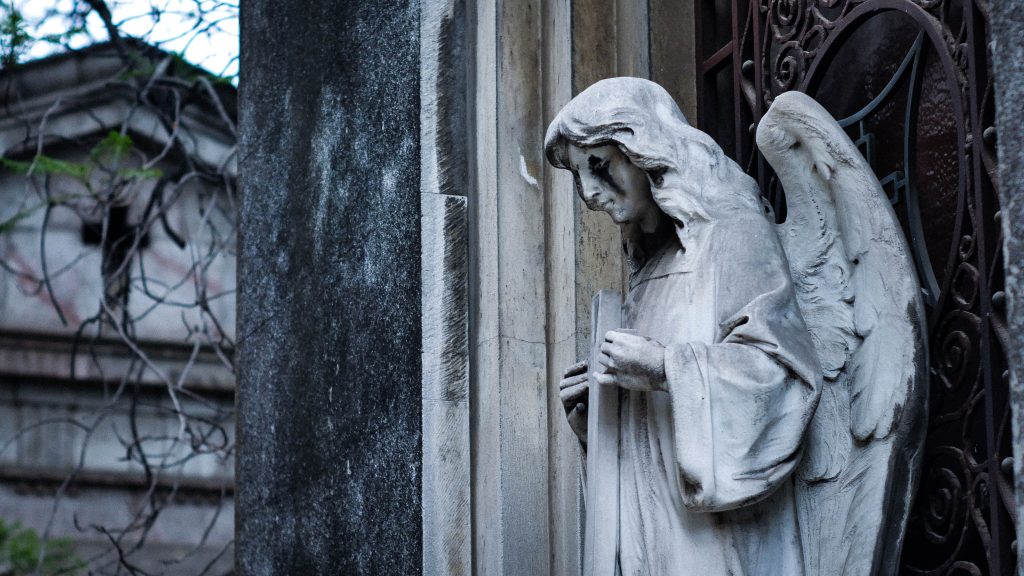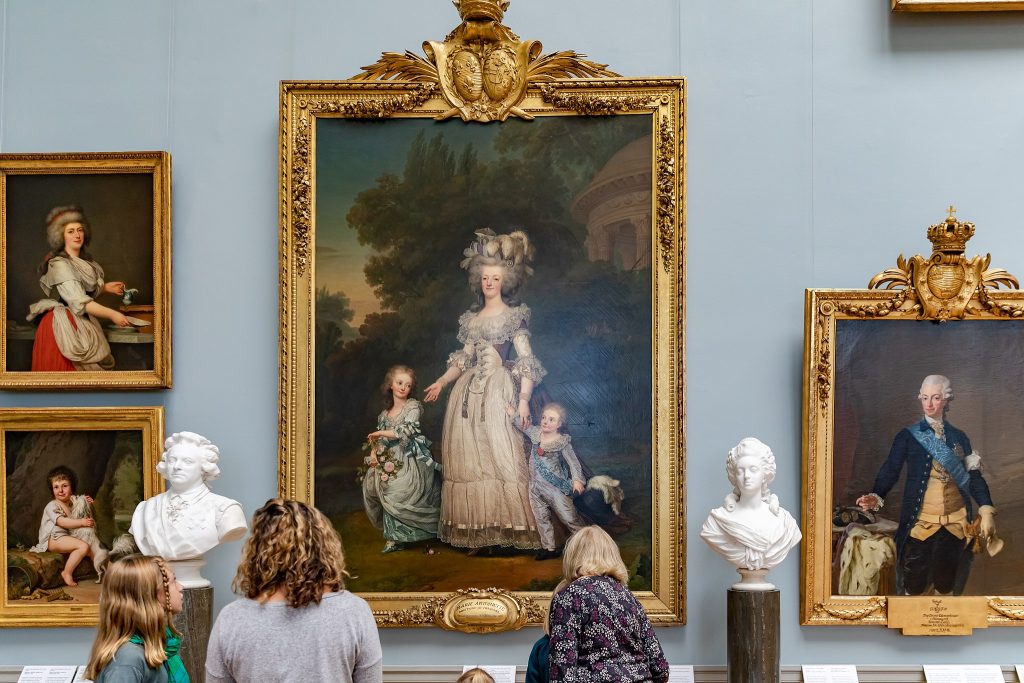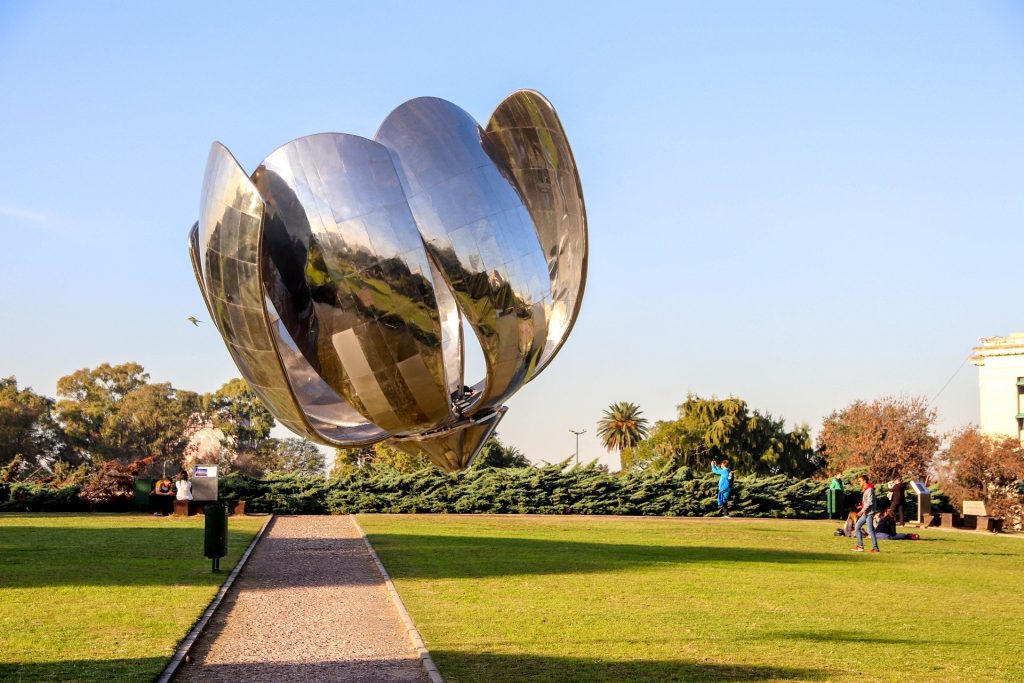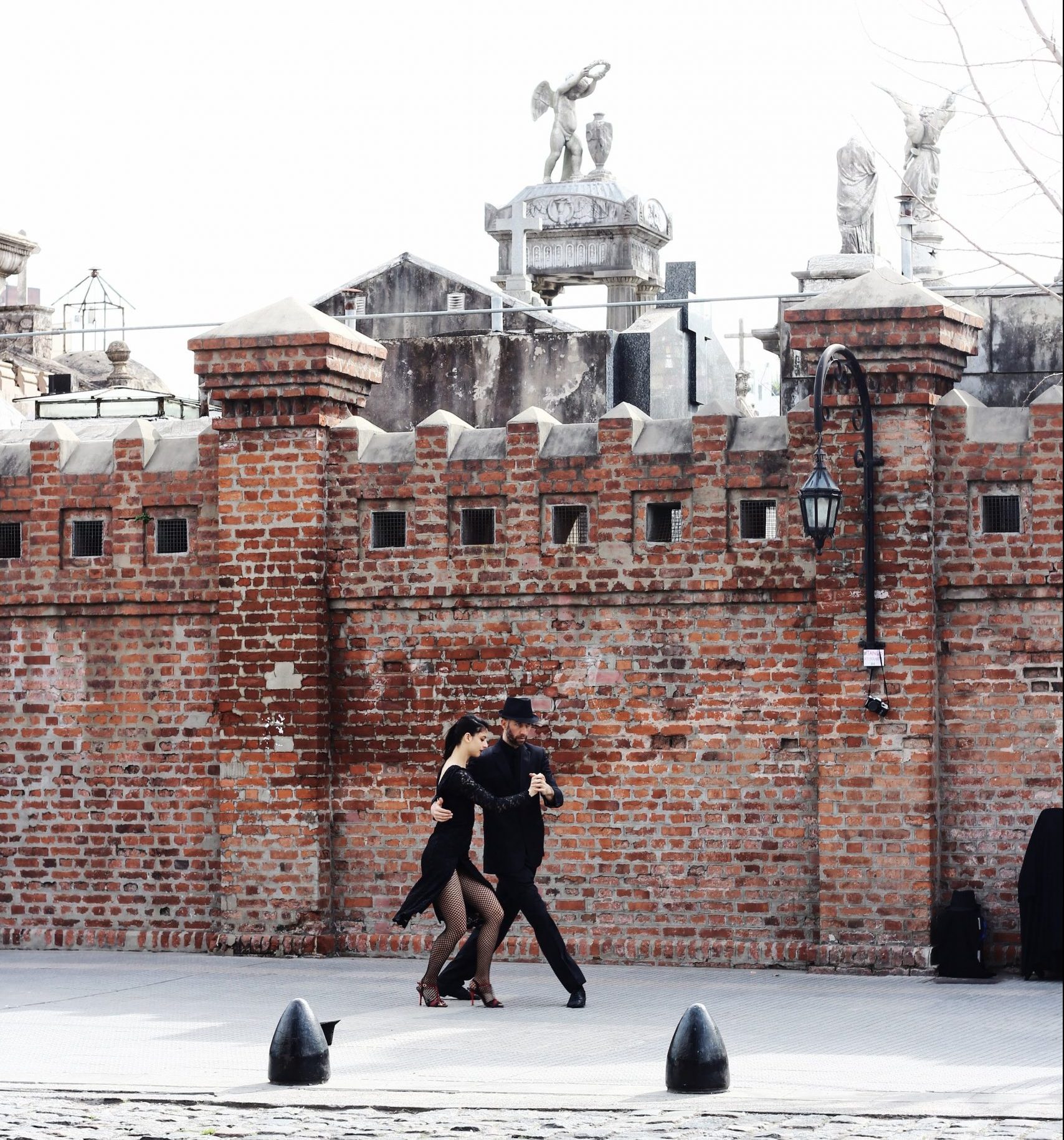With it’s moniker of the Paris of Latin America, Buenos Aires’ Recoleta neighbourhood shows off its wide boulevards lined with tall Haussmann and Italian-Renaissnace buildings. Once a wealthy European outpost, much of the city’s opulence can be found in Recoleta. As Buenos Aires reinvents itself, old money and grand hotels learn to share their space with indy boutiques and street food stalls.
Spacious, leafy streets are punctuated by parks and plaza with vivacious jacaranda trees. Lined with designer shops, Avenida Alvear could easily be mistaken for Vienna’s Mariahilferstrasse or Madrid’s Calle de Alcalá. Side by side are palatial hotels and grand embassies, as well as some of Buenos Aires’ most illustrious sights and museums.
Recoleta Cemetery
Often considered one of Buenos Aires’ major attractions are the thousands of lavishly-built mausoleums. Each one is intricately detailed with styles ranging from Art Deco and Baroque, to Gothic and Art Nouveau. The most influential and rich Argentines have been buried here since 1822, among them are Presidents and the much-loved Eva Perón. Unfortunately, a lot of the marble vaults are falling into disrepair as distant relatives refuse to pay for the upkeep.
If you love a scandal, then keep your eyes peeled for the statue of a man and a bust of a woman, facing apart. The tale is of a rich man who was angry with his wife’s frivolous behaviour, announcing he would no longer pay her way. She was embarrassed publicly, and the fight was bitter until the end. The woman wanted her statue to be erected facing away from her husband as her revenge.
On Tuesdays and Thursdays at 11am, you can join a free walking tour in English. Or, you can book a private guided tour to learn more about the Cemetery’s ornate tombs.

Recoleta Cultural Center
Upon leaving the Recoleta Cemetery, you will see the Recoleta Cultural Center. The Plaza Francia infront is often a hubbub of local artisan vendors selling Argentine pottery, silvery jewelry, leather belts and empanadas – the Argentine’s favourite street food snack.
Within the cultural centre are rotating exhibits and activities for families that tend to be free. This is also where the postmodern Fuerza Bruta’s theatre show is held. The energetic spectacle is described as a 360-degree experience as the performers interact with the public.
National Museum of Fine Art
As a premise to showcase the best of Argentine art, the museum has also held a collection of world-renowed artists since 1910. These masters include Francisco de Goya, Joaquín Sorolla y Bastida, Edgar Degas and Pierre-Auguste Renoir.
Acquisitions over the years have included Rembrandt, Picasso and Monet, which lie side by side to some of the finest Latin American art. Most notably, Spanish-Uruguyan artist Joaquín Torres García and the infamous Mexican painter Diego Rivera, who was married to Frida Kahlo.

Floralis Genérica
In the Plaza de las Naciones Unidas you will find the unravelling silver flower cup known as Floralis Genérica. This eye-catching sculpture’s six finger-like petals are made from a combination of aluminium and steel. Watch them clasp inwards at sunset, when the pool underneath reflects the rusty hues at sunset
Designed by Eduardo Catalano, the petals reach a height of 32 metres when closed, and splay open during the day. It became an instant attraction in 2002, as it marks the beginning and end of each day and is a contrasting style to the old neighbourhood of Recoleta.

El Ateneo Grand Splendid
One of the most impressive libraries in the world, it was initially built as a theatre for 1,050 spectators. Built for Argentine film and music pioneer Max Glücksmann, Italian frescoes adorn the ceiling, gold balconies weave around the mezzanine and sculpted caryatids decorate the Roman pillars.
Originally hosting tango performances, it was converted into a cinema in the late twenties before it was converted into a book and music shop by El Ateneo. It was the first cinema to show a film with sound thanks to its fantastic acoustics. Nowadays the lavish bookshop offers quite the contrast from the more modern National Library with its brutalist architecture, which can be found on La Isla. Pick up some Borges, Cortázar or Casares for an introduction into Argentine literature, or maybe even an Argentine cookbook.

La Isla
Urbanised in 1906 by French architect Joseph-Antoine Bouvard, La Isla is a chic and affluent hill in Recoleta. The goal was to create a garden city, and until 1930 La Isla was populated by gorgeous European-styled mansions. Around the focal-point Plaza Mitre, you will find the National Library and a monument to mark Argentina’s much-loved first woman, Evita Peron. Nowadays, La Isla is made up of pretty parks dotted with notable monuments and Embassies.
